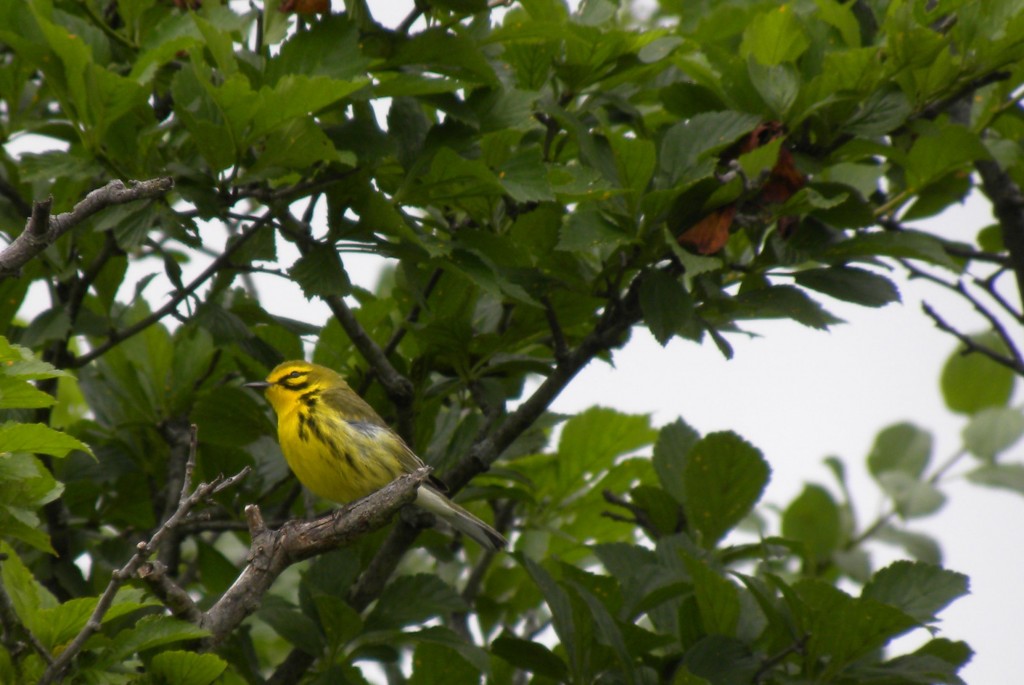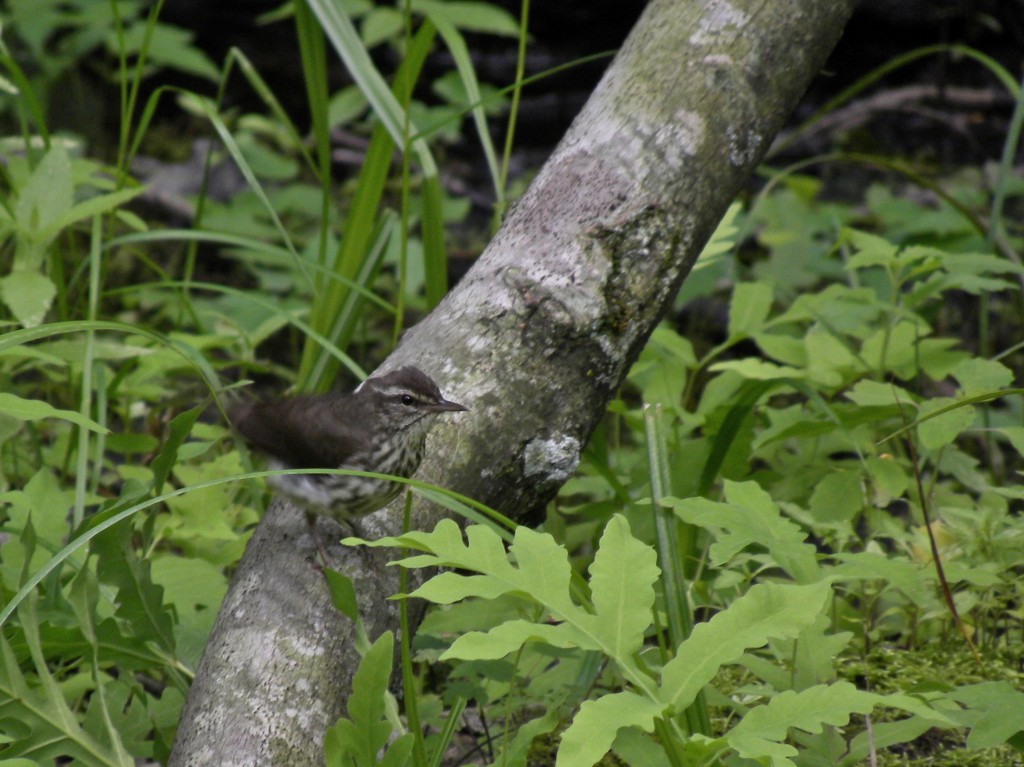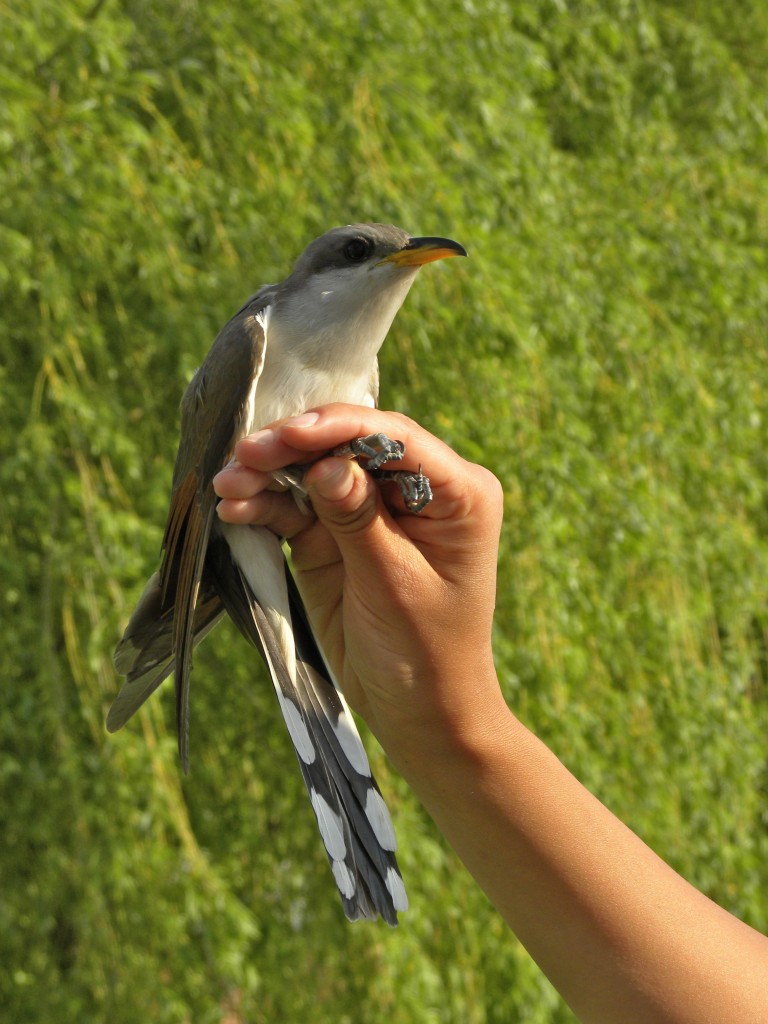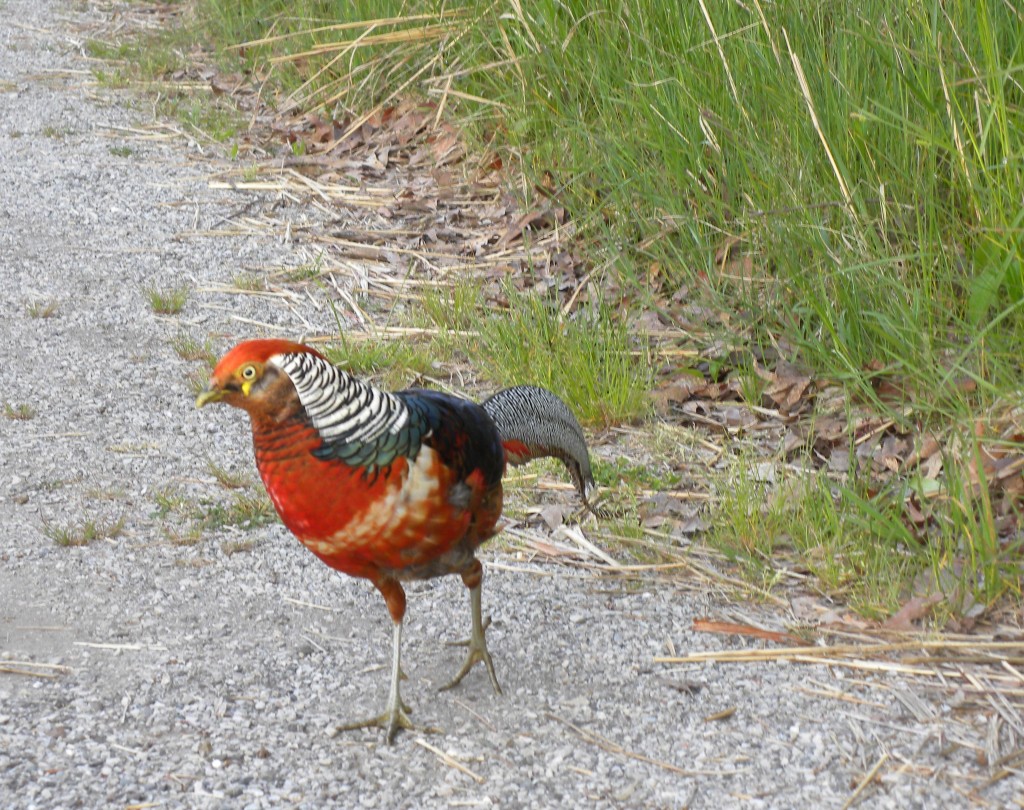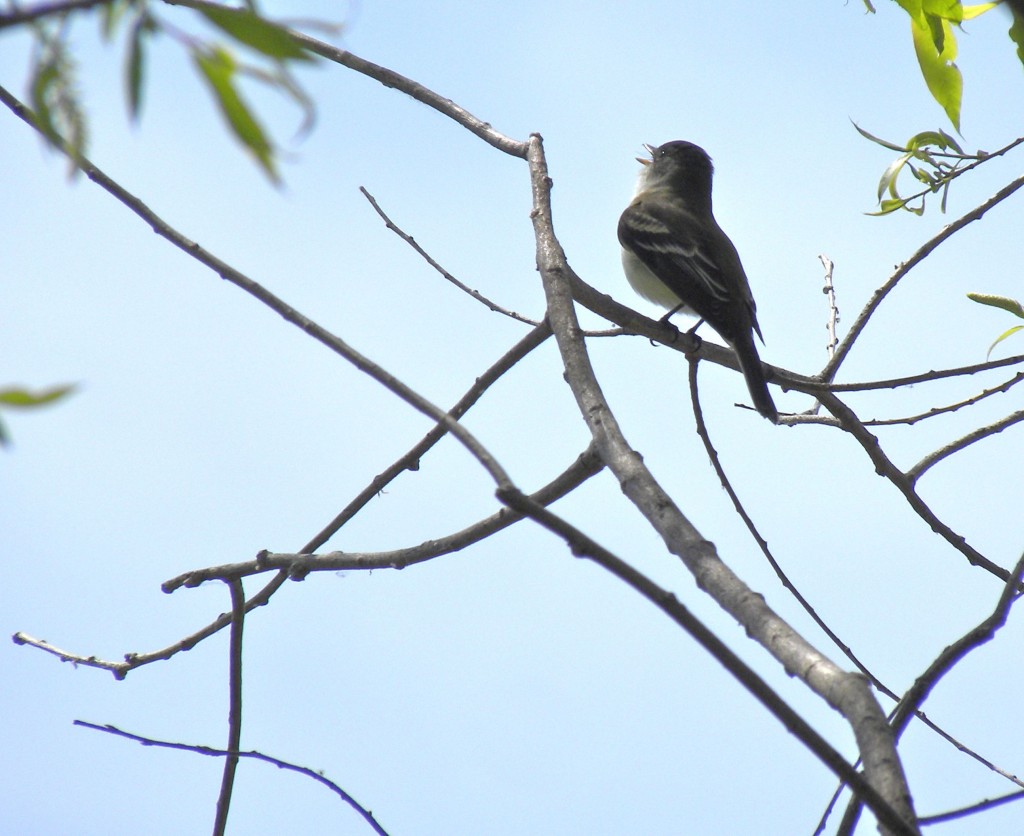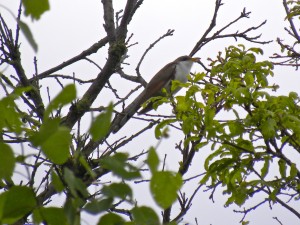May 29, 2012. Last year a Prairie Warbler was found about a 30 minute drive from home, it appeared to be on territory, so rather interesting. Prairie Warblers are uncommon in Ontario; in fact the sighting of one is a celebratory event. Today I decided to go and see if last year’s bird had returned to the same site. It was a very worthwhile trip because I found one and then perhaps 2 more in the same general area.
It was quite hot today and my daughter’s Black Labrador was shuffling slowly along beside me. He’s a good companion who stays within a few yards of me at all times; just as well, I wouldn’t want an unruly or undisciplined dog spoiling the experience. We are well into a prolonged drought, one that started late last year and played a large part in giving us such a mild and snow-free winter. Most rivers and creeks are shrunken, and while everything looks green and lush right now, the heat of summer will do a lot of damage unless we get enough rain to recharge groundwater levels. I mention this because the Prairie Warbler’s territory lies close to a march of power lines where the soil is thin and the vegetation scrubby. Along the way I noted many herbaceous plants withering; when plants wilt for lack water, it’s okay, wilting can be reversed, but withering cannot.
As I walked I watched a Brown Thrasher singing loudly from a the top of a dead elm, Thrashers thrive in scrubby habitat like this; but little else was singing, perhaps because it was mid-afternoon. To cut a long story (and walk) short I eventually heard the distinctive rising buzz of a Prairie Warbler, it’s a song low on volume that seems to carry well despite that. The song is a fast, buzzy trill that rises to a sudden staccato ending: “doo doo dee dee dee de de ddd ee”. I found the bird with little effort and was able to walk to within a few yards of him and get some photos. Very suddenly his song changed and he flew off quickly to intercept 2 more small birds flying nearby; perhaps they too were Prairie Warblers, which gives me hope that there may be a small breeding population here.
